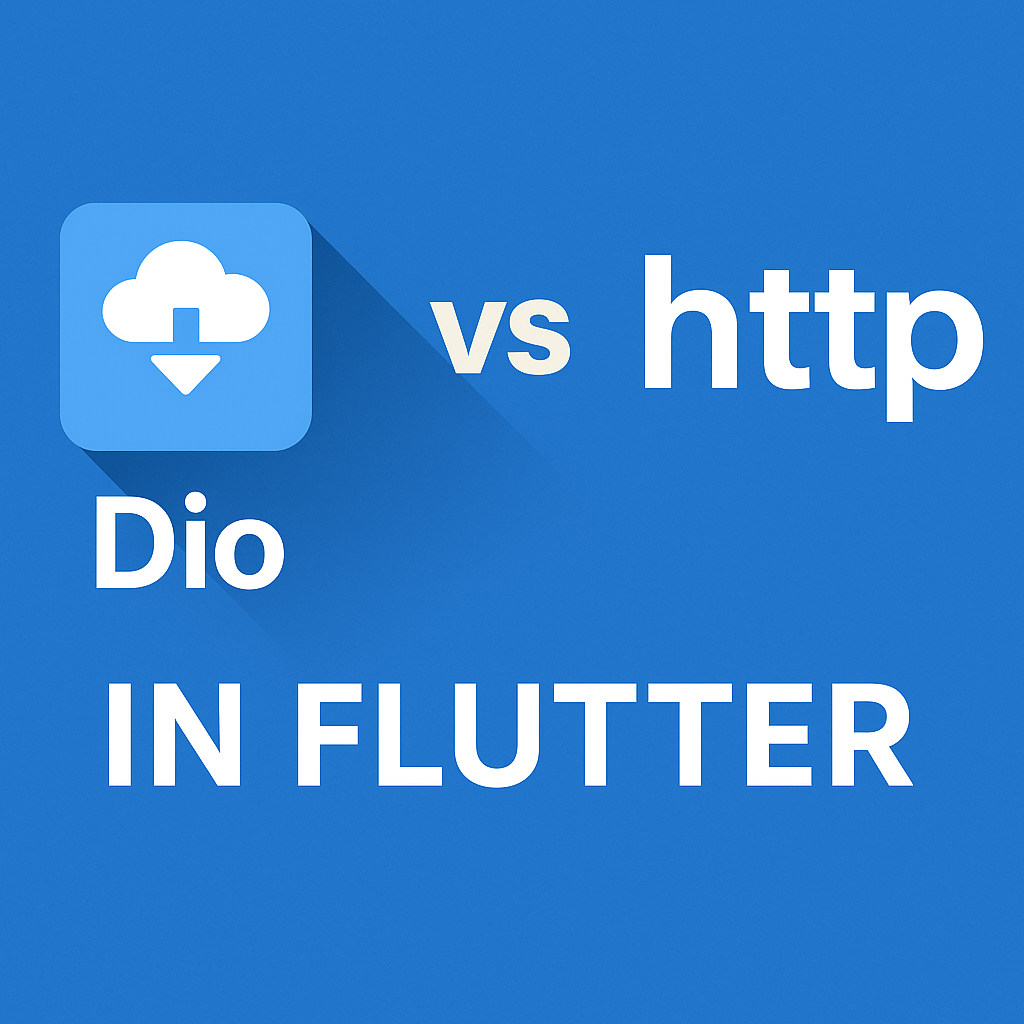When building Flutter applications that rely on APIs, choosing the right HTTP client can impact performance, scalability, and developer productivity. In the Flutter ecosystem, two popular packages stand out: Dio and http.
This guide compares Dio vs http in Flutter for 2025, examining their features, differences, pros and cons, and real-world use cases to help you make the right decision.
What is the http Package in Flutter?
The http package is the official and minimal HTTP client provided by the Dart team. It is part of the Dart ecosystem and supports basic HTTP methods such as GET, POST, PUT, DELETE, etc.
Key Features of http:
- Lightweight and simple to use
- Suitable for small and medium apps
- Works seamlessly with JSON APIs
- Maintained by the Dart team
Example:
import 'package:http/http.dart' as http;
import 'dart:convert';
void fetchData() async {
final response = await http.get(Uri.parse('https://jsonplaceholder.typicode.com/posts'));
final data = jsonDecode(response.body);
print(data);
}
What is Dio in Flutter?
Dio is an advanced third-party HTTP client for Dart and Flutter. It is more feature-rich than http, offering support for interceptors, global configuration, file upload, form data, request cancellation, and more.
Key Features of Dio:
- Interceptors for logging and authorization
- Cancel ongoing requests with
CancelToken - Global base URL and headers setup
- File upload and download support
- Timeout and retry logic
- Supports
FormDataand multipart requests - Better error handling and request chaining
Example:
import 'package:dio/dio.dart';
void fetchData() async {
final dio = Dio();
final response = await dio.get('https://jsonplaceholder.typicode.com/posts');
print(response.data);
}
Feature-by-Feature Comparison: Dio vs http
| Feature | Dio | http |
|---|---|---|
| Base URL configuration | ✅ Yes | ❌ No |
| Interceptors | ✅ Yes | ❌ No |
| Request cancellation | ✅ Yes (CancelToken) | ❌ No |
| Upload/Download files | ✅ Built-in | ⚠️ Limited |
| FormData support | ✅ Yes | ❌ No |
| Timeout configuration | ✅ Yes | ⚠️ Limited |
| Retry mechanism | ✅ Supports external plugins | ❌ No |
| Error handling | ✅ Advanced (DioException) | ⚠️ Basic |
| Code complexity | ⚠️ Slightly higher | ✅ Very simple |
| Ideal for large apps | ✅ Yes | ⚠️ Not recommended |
| Learning curve | Medium | Easy |
When to Use Dio in Flutter
- Building a production-grade or large-scale app
- You need interceptors, authentication headers, or token management
- Uploading/downloading files
- Handling complex forms or multipart requests
- Require cancelable requests or global config
When to Use http in Flutter
- Building small apps, MVPs, or quick demos
- Just need basic REST API calls
- Want to use the simplest and official Dart-supported solution
- No requirement for interceptors, form data, or complex features
Performance Comparison
While both clients perform similarly for basic GET/POST requests, Dio scales better in real-world scenarios due to:
- Built-in timeout handling
- Reuse of base configurations
- Better request pipeline management
- Efficient error resolution using exception classes
Pros and Cons
Dio
Pros:
- Advanced configuration and features
- Great for production use
- Works well with complex APIs
Cons:
- Slightly more complex to learn
- Additional dependency to manage
http
Pros:
- Lightweight and easy to learn
- Maintained by Dart team
- Good for quick prototyping
Cons:
- Lacks many essential features
- Not ideal for larger apps
Frequently Asked Questions (FAQs)
Yes, for most real-world and production apps, Dio offers more features and flexibility. However, http is still suitable for basic use cases.
Technically yes, but it is not recommended. Stick to one HTTP client per app to maintain consistency.
Yes, Dio provides CancelToken to cancel ongoing requests.
Yes, Dio is widely used in production apps and maintained actively.
Beginners may find http easier to learn initially, but Dio is worth learning early due to its advanced features and best practices alignment.
Conclusion
If you’re working on a simple Flutter project and want the quickest solution, the http package will work just fine. However, if you’re building a production app, need advanced features like interceptors, file handling, or request cancellation — Dio is the better choice in 2025.
For long-term maintainability, performance, and flexibility, Dio stands out as the preferred HTTP client in Flutter development.
Read Articles : Dio Package in Flutter – Features & Use Cases (2025 Guide)


